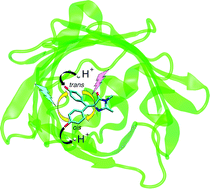Photochromic (i.e. reversibly photoswitchable) fluorescent proteins increasingly find applications as biomarkers for advanced bioimaging applications. From a mechanistic point of view, photochromicity usually stems from the reversible cis-trans photoisomerization of the chromophore. We demonstrated experimentally that cis-trans photoisomerization constitutes a very efficient deactivation pathway of isolated chromophores upon visible light excitation. Nonetheless, this intrinsic property is seldom displayed by chromophores in the folded protein structure. We found that the E222Q amino acid replacement restores efficient photochromicity in otherwise poorly switchable green fluorescent protein variants of different optical properties. Glutamic acid 222 is known to play a pivotal role in the inner proton wires that involve the GFP chromophore and the surrounding residues. Hence its substitution with an isosteric but non-ionizable residue presumably leads to a extensive rewiring of proton pathways around the chromophore, which has a deep effect also on the photochromic properties. In this work, we review and discuss the main photophysical properties of photochromic E222Q GFP mutants. Additionally we show, by means of flash-photolysis experiments, that chromophore cis to trans photoswitching involves a molecular mechanism where stereochemical isomerization and chromophore protonation occur in a coordinated way. Such a “concerted” mechanism is, in our opinion, at the basis of efficient photochromic behavior and might be activated by the E222Q mutation.

You have access to this article
 Please wait while we load your content...
Something went wrong. Try again?
Please wait while we load your content...
Something went wrong. Try again?


 Please wait while we load your content...
Please wait while we load your content...